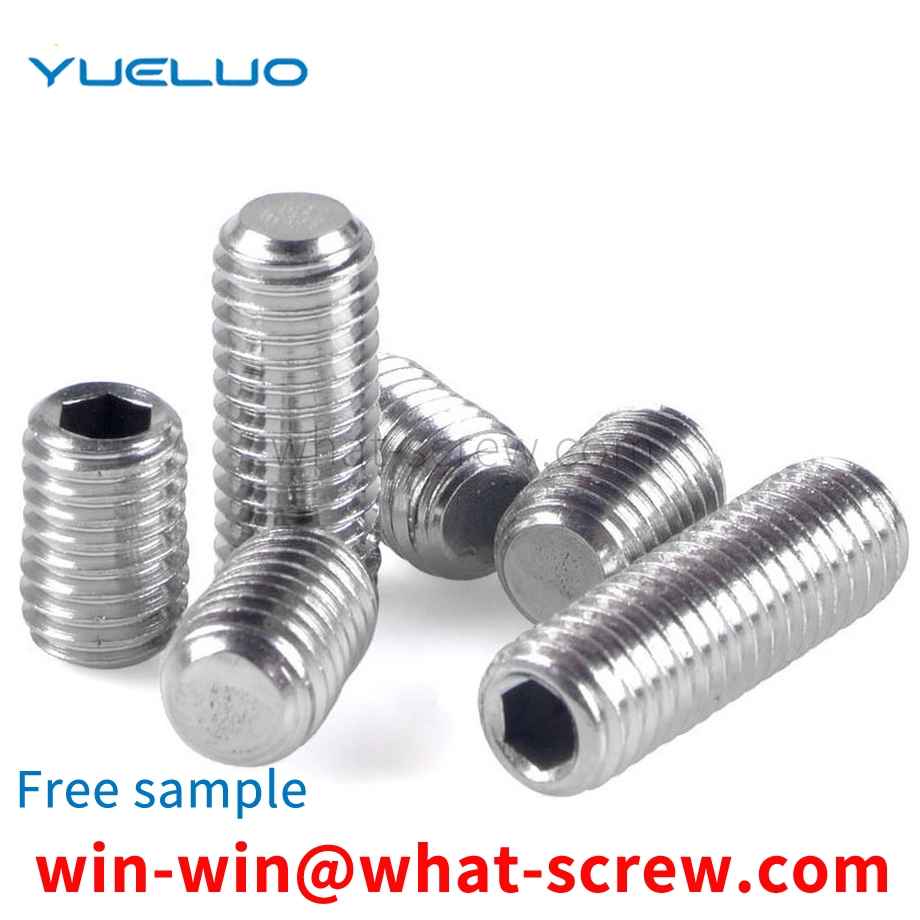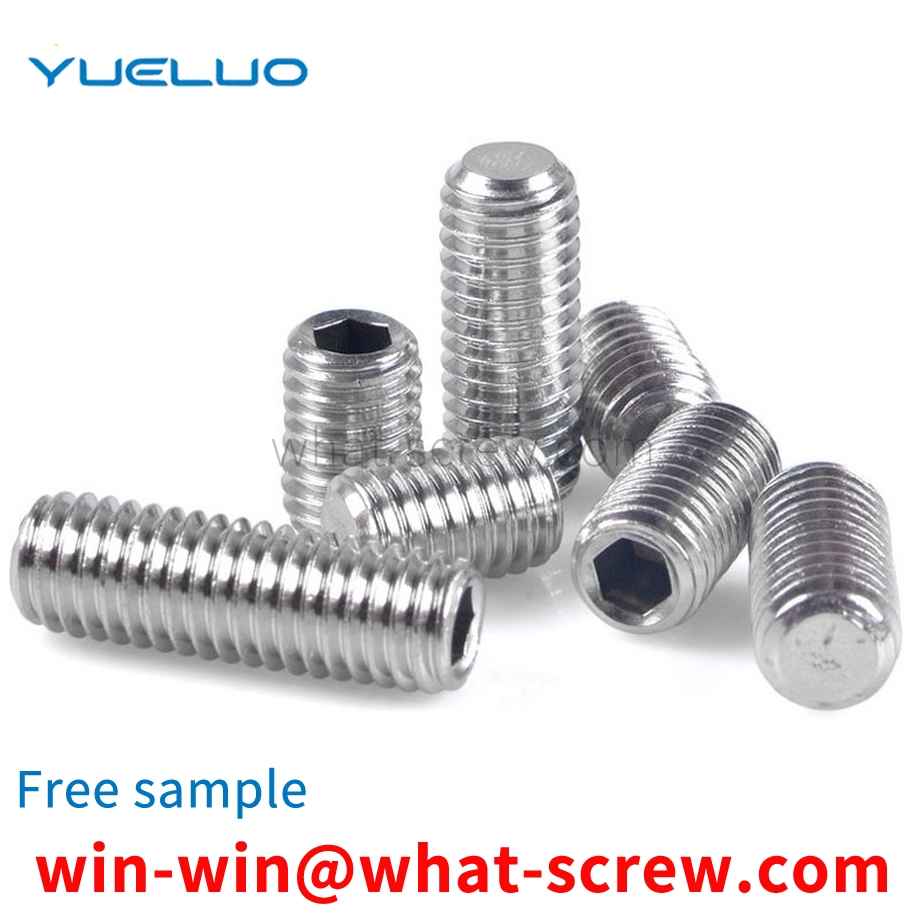Combination bolts refer to a bolt with a spring washer and a flat washer, which are combined by rubbing teeth. Before the combination bolt is used, the bolt, the spring washer and the flat washer are generally combined by a specific machine. The combined production line mainly includes the processes of feeding, discharging, feeding, charging, screwing and tightening. The existing combined bolt production equipment mainly transmits the bolts to each process through the conveyor belt, and finally completes the combined assembly. The machines in each process are scattered and the space is occupied. The vibrating plate feeding generally puts the bolt head up, and its bolts, spring washers, etc. After the flat pad is assembled, the fixation is poor, and it is easy to fall off during the assembly process.
Several concepts about high-strength bolts 1. According to the specified performance level of bolts above 8.8, they are called high-strength bolts. The current national standard only lists M39. For large-size specifications, especially those with a length greater than 10 to 15 times High-strength bolts, domestic production is still short-term. The difference between high-strength bolts and ordinary bolts: High-strength bolts can withstand larger loads than ordinary bolts of the same specification. High-strength outer hexagon bolts High-strength outer hexagon bolts are made of Q235 (ie A3). The material of high-strength bolts is 35# steel or other high-quality materials, which are heat-treated after being made to improve the strength. The difference between the two is the difference in material strength. From raw materials: High-strength bolts are made of high-strength materials. The screws, nuts and washers of high-strength bolts are all made of high-strength steel, such as No. 45 steel, 40 boron steel, 20 manganese titanium boron steel, 35CrMoA, etc. Ordinary bolts are usually made of Q235 (equivalent to A3 in the past) steel. In terms of strength grades: high-strength bolts are increasingly used. Two strength grades are commonly used, 8.8s and 10.9s, of which 10.9 is the majority. The strength level of ordinary bolts is lower, generally 4.4, 4.8, 5.6 and 8.8. High-strength bolts High-strength bolts are viewed from the force characteristics: high-strength bolts apply pretension and transmit external forces by friction. Ordinary bolt connection relies on the shear resistance of the bolt and the bearing of the hole wall to transmit the shear force. When the nut is tightened, the pre-pressure is very small, and its influence can be ignored. In addition to its high material strength, high-strength bolts also exert a large amount of pressure on the bolts. The pre-pressure generates extrusion force between the connecting components, so that there is a large friction force perpendicular to the direction of the screw, and the pre-pressure, anti-slip coefficient and steel type directly affect the bearing capacity of high-strength bolts. According to the force characteristics, it is divided into pressure type and friction type. The calculation methods of the two are different. The minimum specification of high-strength bolts is M12, and M16~M30 are commonly used. The performance of super-large bolts is unstable and should be used with caution in design.
In automobiles, wheel nuts are a widely used component. According to the actual use requirements of the wheel nut, there are often spacers on the wheel nut. In this way, the wheel nut and spacer form a wheel nut assembly. However, in the prior art, since the washer is only movably fitted on the wheel nut, when the wheel nut is removed or a large number of wheel nuts are placed, the wheel nut and the washer will be separated. When in use, they need to be assembled one by one, and when they are disassembled or placed again after use, they need to be assembled again, which not only increases the unnecessary workload, but also affects the use effect of the wheel nut in actual use.
Below in conjunction with the accompanying drawings, Guangdong Yueluo Hardware Industry Co., Ltd. is described in further detail. Please refer to FIG. 2 and FIG. 3, a locking nut includes a nut 1, the bottom is circular, the middle is hexagonal, the top is circular, there is a bolt hole in the center, and the side wall of the bolt hole is threaded. A number of flattening notches 2 are arranged on the top of the nut. According to the locking nut of the preferred embodiment of Guangdong Yueluo Hardware Industry Co., Ltd., the number of the flattening notches 2 is three. Due to the above features, the three flattening gaps can be used as the focal point of the tightening tool and the clamping place of the anti-loose gasket bayonet, and the structure is simple and can be formed by die stamping at one time. The above disclosure is only a preferred embodiment of Guangdong Yueluo Hardware Industry Co., Ltd., and does not limit itself. Any person skilled in the art, without violating the spirit of the present invention, can think of changes that fall within the scope of It is within the protection scope of Guangdong Yueluo Hardware Industry Co., Ltd.
The materials of rubber gaskets are usually NBR (nitrile butadiene rubber), SBR (styrene butadiene rubber), HNBR (hydrogenated nitrile butadiene rubber), EPDM (EPDM rubber), SILICONE (silica gel), VITON (fluorine rubber), CR ( Neoprene), FFKM (perfluoroelastomer), etc.
We have many years of experience in the production and sales of screws, nuts, flat washers, etc. The main products are: plywood chamfered nuts, DIN125, single-pass copper studs, white and black PC transparent screw caps and other products, we can provide you with suitable tightening. Firmware Solutions.



















 Service Hotline
Service Hotline




